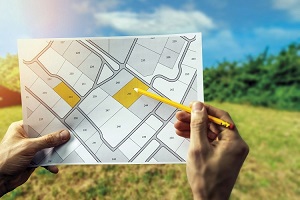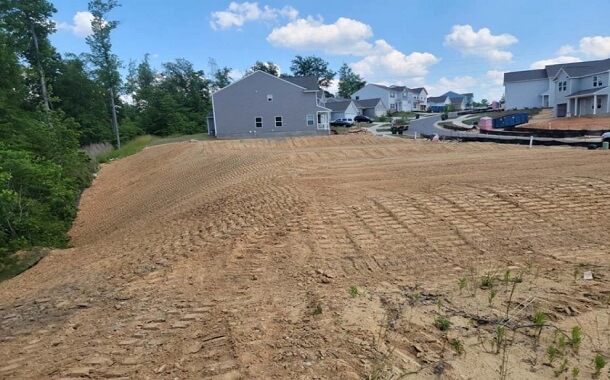How Much Does it Cost to Get Utilities on Land?
Last Updated on December 27, 2023
Written by CPA Alec Pow | Content Reviewed by ![]() CFA Alexander Popinker
CFA Alexander Popinker
When you buy new land to build a home on, you usually have to start from scratch with utilities. This means paying to connect electric, water, gas, sewer/septic systems, and more. But how much does it cost to hook up utilities when there’s nothing there already? Let’s break it down.
How Much Does it Cost to Get Utilities on Land?
Most people pay between $6,500 and $34,600. The average cost falls close to the middle at $20,400. But prices really vary case-by-case. While some people manage to spend just under $100, others end up spending over $50,000! It all depends on things like:
- How far away your land is from existing utility lines
- What kind of soil and landscape your land has
- Which utilities you need to install
- Local utility provider fees
Here’s a preview of hookup prices for common utilities:
- Water $5,000 – $30,000
- Septic $5,000 – $30,000
- Electric $1,000
- Natural gas $120 – $1,350
- Phone/cable $100 – $200
According to Vestright, the cost to get utilities on raw land can range from $10,000 to $30,000, and in rare extreme cases, the cost could go even higher. It largely depends on the nearest lines.
HomeGuide notes that the average cost to bring utilities on vacant land is $9,000 to $34,500+. They also say that the cost to run electric from the road to the house is $2,500 to $12,500.
Gokce Capital says that utility costs can be anywhere from $10,000 to over $30,000 depending on your location and proximity to public utility connections.
How Each Factor Impacts the Cost of Getting Utilities on Land
When budgeting utility expenses for your land, keep these key cost factors in mind:
Distance Matters
The #1 thing that affects utility hookup costs is distance. Installers usually charge per linear foot to dig trenches and lay pipes or wires. The farther utilities need to stretch, the more you pay.
Some example utility line costs per linear foot:
- Natural gas lines: $5 – $25
- Electrical trenches: $400 – $1,200 per 100 feet
- Septic lines: $60 – $120
- Public water lines: $200
Of course, you probably don’t want your home too distant from utilities. But some, like septic systems, require clearance from other buildings. So the shortest possible stretch isn’t necessarily best.
Soil Conditions and Terrain
If your land has rocky soil, steep hills, or other dig obstacles, expect to pay premium rates. Those conditions make utility trenching much more labor-intensive and costly. Nice flat land with soft soil means cheaper, faster hookups.
Permit Requirements
Depending on your area, specialized permits may be needed to install utilities legally. A local architect can advise on requirements. Permit fees often range from $50 – $500 per utility type.
You might also like our articles on the cost of land surveys, land subdividing, or private utility locating.
Utility Provider Fees
Initial hookup and ongoing service fees from utility companies themselves also bump up costs. But more on provider fees below.
Additional Costs to Connect Utilities on Land
On top of the baseline costs to physically trench and install utility lines mentioned already, connecting services through utility providers involves fees too. Here are some examples:
Water and Sewer/Septic Setups
Municipal water hookup fees often range from $200 – $500 or more. If sewer isn’t available, septic permit and inspection fees typically run $450 – $2,300. And you’ll need to pay plumbers for the septic components and excavation work.
Electric Service Activation
Basic electric hookup fees start around $10 but can run $500 or more depending on local utility company rates and construction needs. Expect extra charges if long lengths of wire need installed or trees cleared for overhead lines.
Natural Gas Connection
Gas companies usually charge $15 – $25 per linear foot for distribution line installation. Plus additional fees for meter sets and final hookup that may cost over $100.
Breaking Down Each Utility’s Cost
Now let’s look at cost ranges for adding common utilities:
Water and Septic
Two of the most expensive utilities are water and septic systems. Each averages $5,000 – $30,000 to install on new land. Prices go up if you have really deep or shallow groundwater. This complicates septic system installation. Costs also rise if you’re close to existing septic systems.
Some example water and septic hookup costs:
| Installation Type | Cost Range ($) |
|---|---|
| Sewer Line Installation | $1,400 – $5,700 |
| Well Drilling | $1,500 – $6,000 |
| New Septic Tank & Drainage | $3,400 – $11,400 |
| Water Main Line | $600 – $2,700 |
Electricity
 If the nearest power lines are really close to your land, electricity is pretty easy to connect for around $1,000. Costs go up if lines are farther away or if a lot of digging and vegetation clearing is needed. Underground wiring is also pricier than above ground. Other electrical costs:
If the nearest power lines are really close to your land, electricity is pretty easy to connect for around $1,000. Costs go up if lines are farther away or if a lot of digging and vegetation clearing is needed. Underground wiring is also pricier than above ground. Other electrical costs:
- Trenching: $400 – $1,200 per 100 feet
- New transformer: $3,000 – $7,000
Natural Gas
For natural gas line installation, expect to pay $15 – $25 per linear foot. The average total cost is $540. But it ranges from $120 – $1,350 across different areas.
Phone and Internet
Want old-school landlines or cable TV? Basic phone and cable hookups cost $100 – $200. If you need lines stretched beyond your property, expect prices on the higher end. Individual services like just a landline run $50 – $80 per hour including labor for wiring and jacks.
DIY vs Hiring Pros
Can you just handle utility installation yourself and save money? Nope! In most states, only licensed pro installers can legally connect utilities. Messing this up risks hazards like electric shocks, contaminated soil and water, fires, and more.
Instead of trying a DIY approach, make sure your land is debris-free so pro crews can work easily. That’s the best way to help cut costs.
The Process From Start to Finish
Getting hooked up with utilities is complicated and takes at least 6 weeks if all goes smoothly. Here are the basic steps:
- Check with your planning department about connecting to public utilities. If that’s not possible, you’ll need off-grid solutions.
- Work with an architect, engineer, and/or building contractor to design your utility layout.
- Apply for any required permits before installation can start.
- Finally, pros can start the major work of laying lines and connecting your utilities!
How to Save on Utilities for New Vacant Land
Looking to pinch pennies on your utility startup costs? Here are tips to spend less on getting essentials connected:
- Research right-of-way rules – If existing utility lines cross your property, you may qualify for free or lower-cost trenching using that path.
- Size your utility plans – Limiting the square footage of your home and the number of large appliances needing gas or electric can reduce capacity needs.
- Compare multiple installation quotes – Rates and fees vary, so shop around for the best utility hookup deal.
The Bottom Line
Connecting raw land with essential utilities necessary for comfortable living costs $20,400, on average. But costs vary between $6,500 – $34,600 based on service needs and local factors like soil conditions, distance to utility lines, permits, and provider fees. With proper planning and quote comparisons, you can aim for utility startup costs in the lower half of typical price ranges.


Leave a Reply
Want to join the discussion?Feel free to contribute!